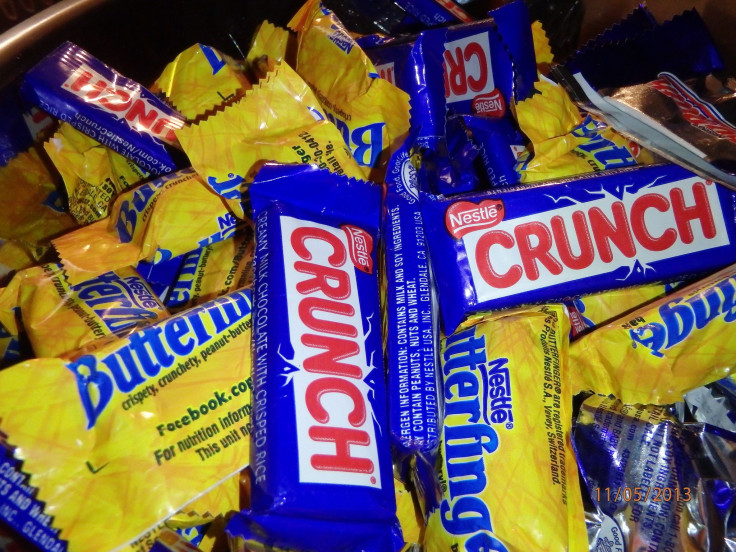Nestle To Remove Artificial Food Dyes From Chocolate Candy Over Growing Health Concerns

Chocolate bar giant Nestlé has agreed to remove all artificial dyes from its chocolate candies by the end of 2015, a move that many parents stand behind for their children’s health and well-being. They announced their next step will be to remove all artificial dyes from their product line. The Center for Science in the Public Interest, a dietician and physician-run advocacy group, is now asking Nestlé’s biggest competitor, Mars, to also stop using food dyes in M&M’s and the rest of its popular candy.
Food dyes have been on the forefront of controversy for decades, causing parents to squint at the back of apple juice containers and cereal boxes. Manufacturers claim artificial additives enhance a food’s flavor, appearance, texture, and shelf life. The appeal is to draw you into the product’s taste, touch, smell, and feel in order to keep you hooked on the chemically altered food item.
Certain food ingredients have had links to adverse behaviors since the 1970s, such as hyperactivity in children, according to CSPI. Many of the dyes are banned in other developed countries, yet the Food and Drug Administration (FDA) has not implemented regular action to protect the public from possible adverse behavioral reactions. Processed foods with artificial food coloring and dyes have been banned in Norway and Austria, and a warning label on food is required throughout Europe.
The Fallible Food Dye Fear
There are, as CSPI says, “a rainbow of risks,” with problems stemming from food dye Blue 1 to, on the other side of the spectrum, Yellow 6. There are more than 3,000 food additives, preservatives, flavorings, colors, and other synthetic ingredients in America’s food products. Over the last 40 years, research has found the artificiality sprinkled into our foods puts the public at risk for certain cancers, birth defects, allergies, behavioral changes, and one of the most common reactions — hyperactivity in kids.
If the public wants answers other than the FDA’s heedless regulations on food industries, the other government source they can turn to is Foodsafety.gov, run by the Department of Health and Human Services. Unfortunately, they’ll reroute you back to the FDA’s Center for Food Safety and Applied Nutrition for reassurance, which says “the FDA uses the best science available to determine whether there is a ‘reasonable certainty of no harm’ to consumers when the color additive is used properly.”
They reach an arguable conclusion, one that many other countries’ research contradicts. But even in our own country, researchers from Purdue University’s Nutrition Science Department studied how children reacted to artificial food dyes and added sugars in food and sweets, and found dyes in everything from breakfast cereals to candies, baked goods, and macaroni and cheese. Not only that, but the research team also found the amount of artificial food dye that’s FDA-certified for use has increased by five times between 1950 and 2012. Children could easily consume 100mg of dyes in one single day.
"Until now, how much of these neurotoxic chemicals are used in specific foods was a well-kept secret," CSPI executive director Michael F. Jacobson said in a press release. "I suspect that food manufacturers themselves don't even know. But now it is clear that many children are consuming far more dyes than the amounts shown to cause behavioral problems in some children. The cumulative impact of so much dyed foods in children's diets, from breakfast, lunch, dinner, and snacks, is a partial reason why behavioral problems have become more common."
A 2004 meta-analysis spanning 30 years of research found the studies “strongly suggest an association between ingestion of synthetic food dyes and hyperactivity. But it wasn’t until 2011 that the FDA finally conceded and said food dyes and other ingredients can cause behavior problems in children. However, the statement was followed by no action of any kind, not even a food warning label. It’s kind of like a big governmental “oh well.” It’s up to companies to become more socially responsible in their decisions, because in the end it’s the public consuming the products, and without government intervention, it’s unlikely the entire food industry will be inspired to change on its own.
Published by Medicaldaily.com



























